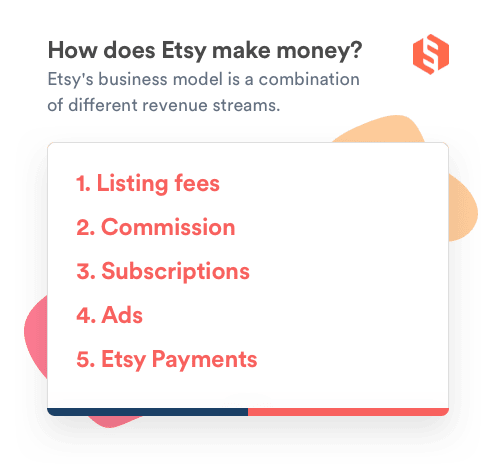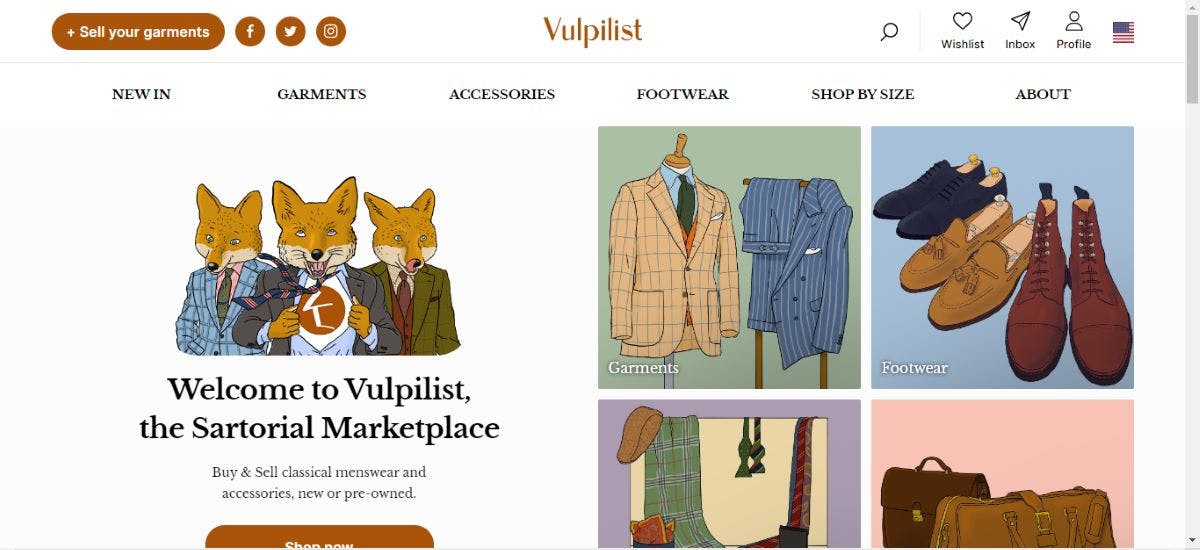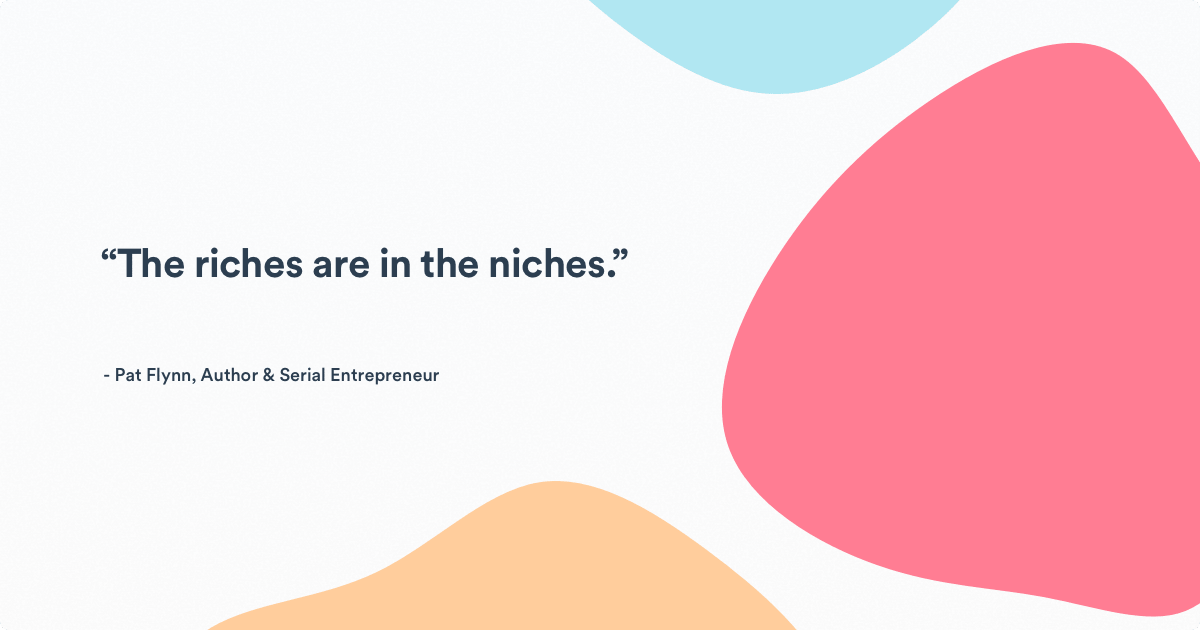How to make a website like Etsy
Etsy is one of the biggest marketplaces in the world, connecting millions of artisans with customers across the globe. This guide takes you through the process of building a website like Etsy – from establishing your business model to building a secure, scalable platform.
Etsy is well-known as a truly global marketplace. The platform counts over 80 million buyers and sellers in 234 countries around the world. In 2020 alone, Etsy powered over $10 billion worth of transactions.
But it wasn’t always this way.
In 2005, Etsy founder Rob Kalin was an amateur furnituremaker struggling to sell his furniture online. He partnered with Haim Schoppik and Chris Maguire to build Etsy, and within a few months, thousands of artisans and crafters had joined the platform.
Today, Etsy is a public company valued north of $20 Billion. It’s one of the most successful peer-to-peer marketplaces in history, taking its place alongside giants like Airbnb and Uber.
While it’s taken Etsy over 15 years to get to this scale, it’s now easier than ever to build your own marketplace business. There are three key reasons why that is.
First of all, marketplace companies are growing fast. Founders have great opportunities to build and scale their own marketplace businesses. The secret of success for the next wave of marketplaces like Etsy is to specialize and focus. For example, Sharetribe customers have seen great success with marketplaces built around communities and focusing, for example, on preloved children's items.
Related: Discover Etsy-like sites built on Sharetribe
Second, you don't need a five-figure budget to start a marketplace. In traditional eCommerce, the business owner usually takes a risk by investing in initial inventory. With marketplaces like Etsy, there’s no need to buy supply, negotiate contracts with suppliers, or manage logistics: the users of your marketplace do that for themselves.
Third, building a marketplace site like Etsy has never been easier. With software like Sharetribe, it’s easy to launch quickly and validate your idea. When it’s time to level up, the software also gives you the power to add custom features at a fraction of the cost of building a marketplace platform from scratch.
But more on what we offer at Sharetribe later. Next, we'll outline how a marketplace like Etsy works and what that means for your tech requirements.
Sites like Etsy are classed as peer-to-peer marketplaces. Etsy itself doesn’t buy, manufacture, or ship products – all of that is handled by sellers. Etsy simply acts as the platform connecting buyers and sellers, providing the infrastructure and support for small businesses to flourish.
When sellers sign up to Etsy, they get access to a huge pool of potential customers. It’s easy to get started: sellers make a profile, create a listing for each product, and pay Etsy a $0.20 fee for each listed item. Once that’s done, the seller’s Etsy store is live.
Buyers discover products and stores by browsing categories or searching for specific items. Each product listing page has images, a description of the product, and reviews from previous buyers.
Marketplace websites like Etsy are much more complex than regular eCommerce sites.
The checkout process is simple. Etsy handles all payments, with a sophisticated infrastructure in place that accepts payments in different currencies and guarantees transactions are secure.
Once the buyer receives their item, Etsy encourages them to review it. In the past, Etsy sellers were asked to review buyers too, but this feature has now been removed. Many two-sided marketplaces (like Airbnb, for example) still have this feature to increase trust between users.
Profiles build trust between marketplace users. Both buyers and sellers should create profiles. Seller profiles showcase all of their product listings and reviews in one page. These can be thought of as the seller's digital storefront.
Every product should have its own listing. These pages let sellers share detailed product information with potential buyers.
Product listing pages should give sellers the ability to enter a description, add images, and include variants like different sizes or colors. Showcase the seller’s reviews and ratings on each listing, and include a link to their profile or other related items they sell.
Customers must be able to seamlessly navigate around your marketplace and find the products they’re looking for.
For product-based marketplaces like Etsy, it’s best to organize listings by product category. There’s often several layers to this. For example, a jewelry category might have sub-categories for bracelets, necklaces, and earrings.
Include a search function so customers can quickly find specific items. Building a search function from scratch is expensive, time-consuming, and very difficult, so consider using an Etsy-style website builder that comes with a pre-built search function.
Handling payments through an online marketplace platform is complicated. In fact, the standard marketplace payment flow is about as complicated as online payments get. Furthermore, marketplaces are subject to many regulations that dictate how they must handle payments.
Handling marketplace payments has become easier thanks to marketplace software and payment service providers.
Marketplaces often have to split payments. While most of the payment goes to the seller, the marketplace platform typically charges a commission. These payments need to be processed without going through the marketplace owner's bank account – otherwise, regulators might deem your marketplace to be acting as a bank with sellers' money. Needless to say, this opens marketplaces up to a messy web of banking regulations and legal complications.
Another issue in payments? Escrow. Marketplaces often hold funds in escrow until buyers receive their purchase. This can minimize fraud and increase trust, but introduces all kinds of regulatory and technical challenges.
Luckily, today there are many online payment providers who specialize in marketplace payments. Building an integration to a third-party payment gateway is a technical challenge, too, but using a marketplace builder will spare you this work as well.
Reviews are critical in building trust between buyers and sellers. Sellers with more reviews tend to be more successful. Reviews typically include a rating, a couple of sentences of feedback, and sometimes pictures of the product.
Buyers and sellers should be able to communicate. Marketplace websites like Etsy achieve this with a messaging service that allows buyers and sellers to talk directly with each other.
Communication tools are important for various reasons. Often, buyers have questions for sellers about their items, or sellers might want to let buyers know that their item has shipped.
A lot of sites like Etsy host sellers that make unique, one-off items. Once they’ve sold that item, it’s gone. It’s important to ensure that other customers don’t attempt to buy the item by marking it as out-of-stock.
Robust stock management systems may even be needed for high-volume products. Sellers need tools to manage availability and production, ensuring that popular products are always available to buyers.
Most online eCommerce stores have shopping carts where buyers can collect multiple items before proceeding to checkout. This is convenient for the buyer, but isn’t always the best option for the platform owner. Shopping cart abandonment is a big challenge in online commerce, and introducing an extra step in the checkout process can often lead to a decline in conversion rate.
Many Etsy-like multi-vendor marketplaces won’t need a shopping cart, because buyers tend to want to buy single, unique items from specific sellers. However, if you’re building a marketplace more like Amazon, a shopping cart might be a requirement. This brings some technical challenges, as on a marketplace, you’ll need to split the payment of a multi-vendor shopping cart between all of the sellers while also taking your marketplace commission.
Our CEO Juho's thorough article on how to build a multi-vendor shopping cart helps you evaluate if this is a feature you need. And here's an article series on building one with Sharetribe.
Once a buyer has purchased a product, they expect it to be shipped quickly. The marketplace platform should help sellers make order fulfillment as smooth as possible.
If your marketplace sells unique, high-value items, it may be appropriate for buyers and sellers to meet face-to-face. If that’s the case, location features might be a necessary addition.
Etsy’s revenue model is simple. The marketplace makes money in five main ways:
- Commission – every time a seller makes a sale, Etsy takes a 5% commission.
- Listing Fees – every time a seller lists a new item, they are charged a $0.20 listing fee.
- Subscription – sellers can join Etsy Plus for $10/mo to access additional tools and features.
- Ads – sellers pay Etsy for their products to be more visible.
- Payments – sellers can enroll in Etsy Payments to process payments from buyers. Fees vary by country, but tend to be around 3–5% of the gross purchase price.
There are other models that aspiring marketplace entrepreneurs could consider, including membership fees, lead fees, or freemium models. To learn more, read our guide to choosing the right marketplace business model for you.

Choosing the right business model and determining the right marketplace pricing strategy are critical decisions that can make or break your business.
Low fees might attract sellers to the platform, but marketplaces need to generate revenue to maintain the platform, add new features, and pay employees. Equally, fees and upfront costs can’t be too high, or sellers won’t sign up for the platform. Striking the right balance is crucial to the success of any marketplace business.
Update your business model as your marketplace grows. At first, commission models are most attractive as they keep costs low for new sellers. As more users join the platform, you can consider introducing new revenue streams like listing fees or paid advertising to diversify your business.
Competing directly with Etsy is hard. They’re a huge, established player with millions of sellers and buyers all over the world.
But you don’t have to build a site that’s exactly like Etsy.
Instead, start small and build a memorable experience for a targeted group of users.
New marketplaces that try to reach everybody often reach nobody. Specialized marketplaces speak to a small, defined audience. This focus enables entrepreneurs to build a differentiated platform that delivers a winning customer experience for the core target market.

Knowing how to target the right niche can be challenging. Fortunately, it’s easy to validate your idea before committing to building it.
For unique items like those sold on Etsy, Facebook Groups can offer an opportunity to get feedback from your potential audience. Use Google Trends to understand the number of people searching for products in your niche, or interview a group of potential users to get their feedback.
But in the end, there’s only so much that research will tell you. The best way to validate your idea is to build your marketplace platform and launch as early as possible. Luckily, it’s easy to build a handmade website like Etsy quickly, without coding.
Once you’ve validated your marketplace idea, it’s time to start setting up your business. There are a few ways to develop a marketplace. Let’s explore three of the most popular:
- Coding a site like Etsy from scratch.
- Using popular website or eCommerce builders.
- Using dedicated, no-code marketplace software.
Coding your marketplace from scratch means you can include whatever features you need. But even if you have advanced front and back-end coding skills, building a marketplace from scratch is a complicated and time-consuming project.
Sharetribe’s Senior Full Stack Developer, Mikko, recently explored what it takes to code a marketplace platform from scratch. Read his step-by-step breakdown of the process here: How to build a marketplace app
If you don’t have these skills, outsourced development costs north of $50,000, and will take months to complete.
Launch your Etsy-like platform early, get feedback from early users, and adapt accordingly.
If you’re building a site like Etsy, success lies in serving your core audience better than any other existing solution. It’s important to get your platform launched early, get feedback from early users, and adapt accordingly.
Spending months and thousands of dollars building a platform from scratch doesn’t allow you to do this. Entrepreneurs who go this route often risk ending up with an inflexible platform that looks great but doesn’t match their users’ expectations.
Another approach is to combine a standard eCommerce site builder with multi-vendor plugins. Popular eCommerce platforms like Shopify and Magento support this, as do Wordpress sites with WooCommerce and Dokan plugins.
This approach can work if you’re building an “online mall” and don’t expect buyers and sellers to interact too much. If you’re familiar with working with these platforms, you’ll get a website up and running much quicker than by coding from scratch.
Usually, however, eCommerce builders won’t be the best fit for marketplaces that need advanced features. As your marketplace grows, users will demand new features. Often, eCommerce builders won’t support these, so you’ll face a tough choice between starting from scratch and building a new site, or letting down your users.
Using a multi-vendor eCommerce builder can also present challenges in handling marketplace payments in accordance with online payment regulation. Another challenge is that your whole site will be held together by a network of plugins. Setting them up will take some time and technical skill. Moreover, if one plugin ever goes down, or needs an update, your whole business could go offline.
Using dedicated marketplace software to create your Etsy-like site has many benefits. The most important one is speed to market. Using a marketplace builder is by far the fastest way to launch – Sharetribe users have launched sites in less than a day.
With no-code marketplace software like Sharetribe, you don't need technical skills. They handle complex issues like payment frameworks out of the box. All the key features are there without installing plugins or templates. No technical maintenance work is needed, so founders can focus on running and growing their business.
Using a marketplace builder is by far the fastest way to launch.
There are some limitations to keep in mind. For example, Sharetribe doesn’t support a shopping cart out of the box, and the only business model offered in the basic product is a commission-based model. Luckily, most marketplace ideas won’t require these features in the early stages.
Sharetribe's no-code functionality allows you to launch and run your marketplace without any custom development. However, when you’re ready to start adding custom features to your marketplace, it’s easy to do so with Sharetribe. And you find a developer partner through Sharetribe’s network of Experts.
If you’re hiring developers to build your site, expect to spend upwards of $50,000 to get a fully functioning site. If you don't need to outsource the skills, the investment in terms of money will naturally be lower.
But there's a monetary value to how you spend your energy. The most important resources a marketplace entrepreneur has are their time and focus.
The most important resource a marketplace entrepreneur has is their time.
Fortunately, there are better, more affordable options.
With Sharetribe, you can build your marketplace with no or minimal investment. You get a 14-day free trial of the Build plan, after which you can continue setting up your marketplace at only $39/month. Once you're ready to invite in actual users, live plan prices start at $99/month, depending on if you want to first onboard supply only or start facilitating transactions right away. Everything is included in the price – there are no surprise maintenance fees or upcharges, and new features are constantly added at no additional cost.
Once you start creating custom functionality, you can switch to a self-hosted Sharetribe marketplace (with the help of a verified Sharetribe Expert partner developer, if you need one). You continue managing your marketplace in Console and can build just one feature or modify your entire platform. While custom-developing your platform, your developers won’t have to worry about maintenance or performance. If you don't have a developer on your team, check out our guide on hiring a marketplace developer for helpful advice.
Getting started with Sharetribe is easy. Want to set up your marketplace today? Here’s how:
- Create your free Sharetribe trial and enter your details.
- Add your marketplace's name.
- Build your marketplace's landing page: add a slogan and description that explains what your marketplace does, upload visual assets, and more. Unsplash has great free images, but if you have some budget, check out Stocksy for creative, hand-selected visuals.
- Determine the design of your marketplace: upload a logo and other visual assets photo, and choose the layout of your search page and listing pages.
- Configure your listing settings, listing fields, and search settings.
- Choose your commission and minimum transaction size.
- Test that everything looks like and works to your liking in your Test environment.
- Once everything is ready, it's time to subscribe!
- Activate online payments by connecting a Stripe or PayPal account. You’ll be able to receive payments and collect commissions straight away.
- Check everything over one last time.
- Congratulations – your Etsy-like site is ready to go. 🚀
For more information on setting up Sharetribe, check out our Help Center or chat with our support team – they’re available to help seven days a week.
Growing a marketplace presents different challenges to growing other online businesses. Brace yourself for a continuous balancing act: you'll need to keep supply and demand in check at all times to keep your users happy.
There’s no one-size-fits-all approach to marketplace growth – the specific tactics that drive growth depend on your niche. But there are a couple of principles that crop up repeatedly in high-growth marketplaces built on Sharetribe.

Marketplaces that launch early can build significant competitive advantages. Find a way to launch your marketplace as quickly as possible. Onboard a cohort of early users and ask for honest feedback – this is crucial in shaping strategy. Most marketplace should focus on building the supply side first. After the supply is onboarded, you can launch to the first customers.
No marketplace business is perfect on day one. Growth is driven by marketplaces' response to their users' needs, improvements to the core platform, and features that unlock value. Launching quickly lets you start this process early and ensure you develop features that are popular with users.
Sellers are integral to marketplace websites like Etsy. Attracting and retaining successful sellers dictates growth for all marketplace businesses. The more high-quality sellers on your marketplace, the more attractive the platform is to buyers.
Educate new sellers about what it takes to be successful on your platform. Teach them the secrets to a great product listing and guide them through best practices for interacting with customers.
Focus on building a community of sellers who feel part of a larger mission. Etsy has a dedicated seller community with success guides, discussion boards, and it’s own podcast. Communities improve seller engagement and ensure sellers remain loyal to your marketplace.
There are many different growth marketing tactics marketplaces adopt. These include:
- Content marketing
- Paid media
- Social media marketing
- PR
- Word of mouth marketing
Related: How to find the best marketplace growth strategies
Any, or all, of these tactics might work for your marketplace. Identify the most promising strategies and conduct experiments to understand what works best. Continually iterate and make sure you take a joined-up approach that maximizes marketing spend across channels.
It’s critical to have a firm handle on the key marketplace metrics to track. Don’t just focus on headline numbers like transaction volumes or user numbers, dig deeper to understand performance on a more granular level and discover better ways to invest in growth.
Don’t be worried if you don’t hit a home run straight away. Identifying the optimal marketing channels for your marketplace is an iterative process. Be creative. Airbnb were on the verge of bankruptcy before they launched their infamous breakfast cereal campaign in 2008 – an idea that shot them to national prominence.
It’s best to launch with the bare minimum level of features. Early on, focus on features that enable sellers to build a profitable business, like powerful listing pages and buyer reviews.
Once your marketplace starts to grow, let sellers influence the development of new features. Track their behavior, conduct interviews, and do your best to understand what kinds of functionality will help your sellers be even more successful. Commit to constantly learning and improving on what you've built to keep providing value to your niche.
Also, don't hesitate to involve power users in the design and rollout of new features. This also helps build a more powerful seller community.

Building new features that benefit sellers is key, but it’s also important to invest in improving the buyer experience.
Focus on improving user experiences at every stage of the customer journey. Consider tweaks to the login process, investigate offering more payment methods, add new ways for customers to discover products, and make the transaction flow and payment process frictionless.
Use software to track customer journeys and identify bottlenecks. Run focus groups or interview customers to better understand their needs and expectations. Improving UX can drive significantly higher conversion rates, benefiting both sellers and the marketplace owner.
Building a successful marketplace like Etsy is a big challenge. But it can be broken down into practical steps that anyone can tackle. (If you're interested in reading more, check out our complete guide on how to create an online marketplace website.)
With Sharetribe, you can have a marketplace up and running in just a few hours. Launch it as fast as possible, and start learning about your idea and audience.
After you've validated your idea, you can start using your profits to add features to create better experiences for buyers and sellers. The time you've spent learning about your audience pays off multi-fold when you can focus your resources on building features you know users will love.
Experiment with different growth tactics, and once you’ve hit your stride, don’t slow down – continue to add features and invest in further growth.
We at Sharetribe are here to support you throughout the journey. Over the past decade, well over 1,000 new marketplace businesses have launched on the Sharetribe platform – learn more about their stories.
With a huge library of content, a product to support every stage of your journey, and a friendly customer support team, Sharetribe has everything you need to build a website like Etsy. Reach out to us at hello@sharetribe.com or visit our Help Center.
Every journey starts with the first step. Take yours today – the world needs more marketplaces!
Start your 14-day free trial
Create a marketplace today!
- Launch quickly, without coding
- Extend infinitely
- Scale to any size
No credit card required
